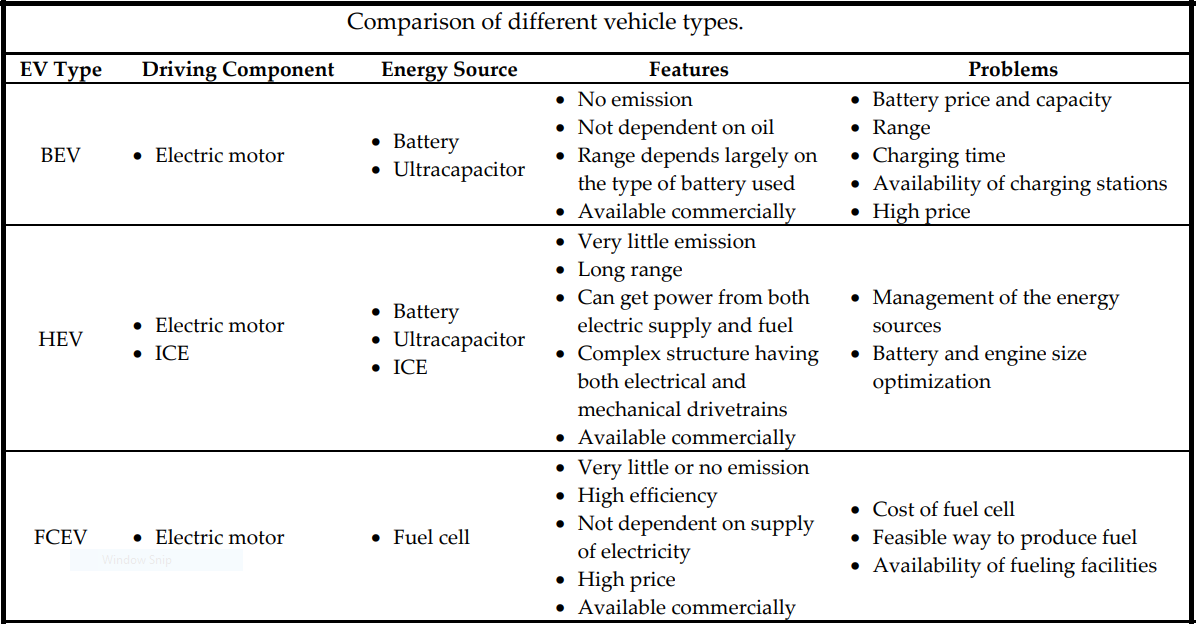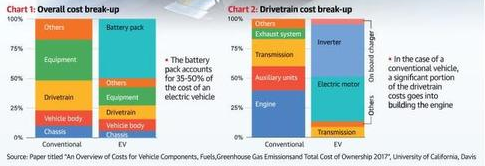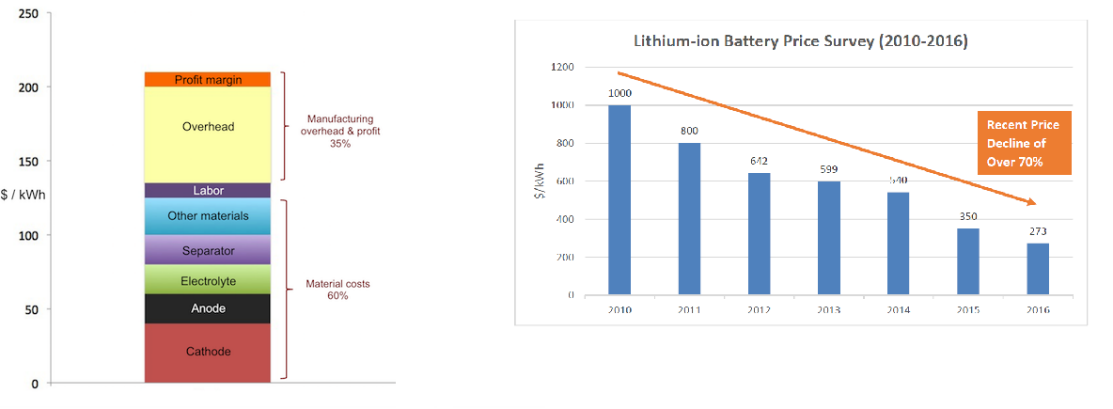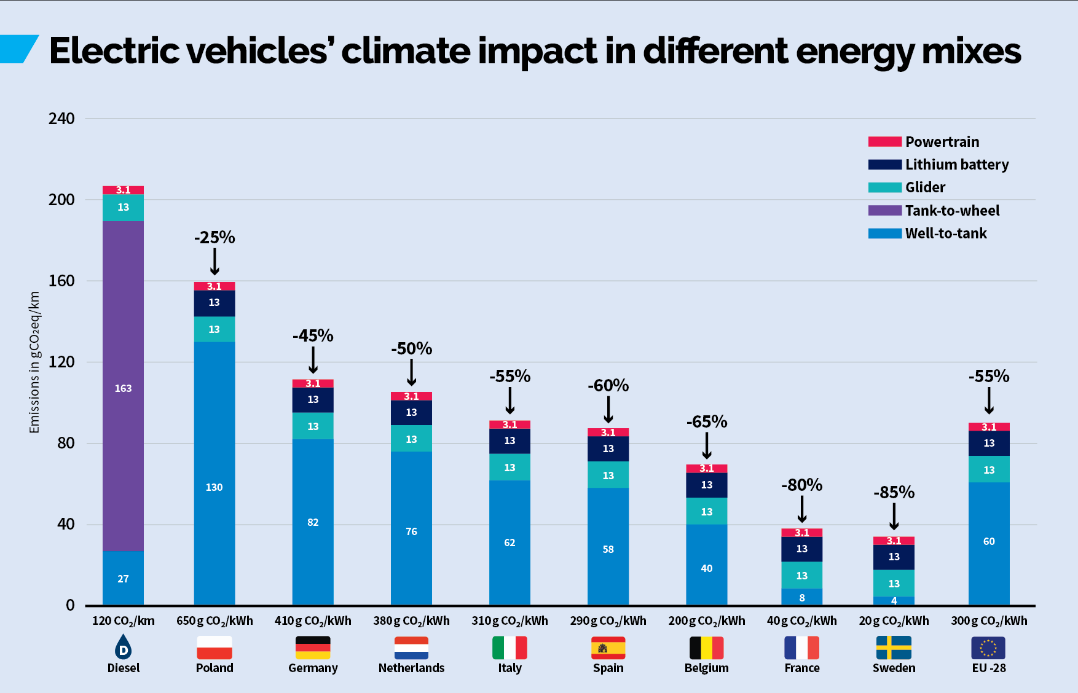PREVIOUS
Economics behind e-vehicle batteries
September 30 , 2019
2299 days
7808
0
The story so far
- Shifting gears in the transition to electric vehicles (EVs), the NITI Aayog, in May this year, proposed to ban the sale of all internal combustion engine (ICE) powered three-wheelers post-March 2023.
- It also suggested that all new two-wheelers below 150cc sold after March 2025 should be electric.
- In consonance with these proposals, the Union Budget presented on July 5 announced tax incentives for early adopters.
- Even as the automobile industry had objected to the think-tank’s proposal and called for a practical approach in framing electric vehicle-related policies, there has been the worry that EVs are still not financially viable because of various costs associated with their manufacture and use.
Cost structures of conventional vehicles and electric vehicles
- The portion of the costs of the drivetrain of EVs — the system in a motor vehicle which connects the transmission to the drive axles — in comparison to the cost of the entire vehicle is four percentage points lower when compared to ICE vehicles.
- However, the battery pack takes up nearly half the cost of an electric vehicle.
- For any meaningful reduction in the physical value of EVs, the cost of battery packs needs to reduce significantly.

- Chart 1 compares the cost breakdown of a conventional ICE vehicle with an electric vehicle.
- Chart 2 compares the drivetrain cost breakdown between the two kinds.

Components of a battery pack
- The predominant battery chemistry used in EVs is lithium-ion batteries (Li-ion).
- No new technologies are on the horizon for immediate commercial usage.
- The cost of the materials or key-components of the battery, namely the cathode, anode, electrolyte, separator, among others, contribute the most (60%) to the total cost.
- Labor charges, overheads, and profit margins account for the rest.
- Labour is a relatively minuscule component of the overall cost.
- Any reduction in the cost of the battery pack will have to come from a reduction in materials cost or the manufacturing overhead.
Cost of the Li-ion battery pack cost
- Cost of the Li-ion battery pack cost evolved in the last decade.
- The price of these battery packs has consistently fallen over the past few years.
- This decrease is in part due to technological improvements, economies of scale and increased demand for lithium-ion batteries.
- Fierce competition between major manufacturers has also been instrumental in bringing down prices.
- The chart shows the change in the price of Li-ion batteries from 2010 to 2016.
- It is not clear if the battery cost can be reduced even further.
- Given that raw materials account for 60% of the cost of the battery pack, the room for further cost reduction is rather limited.
- The graph shows the cost split of a Li-ion battery pack.

India stand on EV adoption
- In India, EV adoption will be driven by two-wheelers rather than cars in high numbers because India’s mobility market is driven more by two-wheelers.
- According to the NITI Aayog, 79% of vehicles on Indian roads are two-wheelers.
- Three-wheelers and cars that cost less than ₹10 lakh account for 4% and 12% of the vehicle population, respectively.
- Two-wheelers will also need smaller batteries when compared to cars and hence the overall affordable cost.
- India needs to manufacture Li-ion cells in-house.
- Now, cells are imported and “assembled” into batteries.
- Setting up a Li-ion manufacturing unit requires high capital expenditure.
- But battery manufacturing in India is expected to grow as electric vehicles grow.
Environment-friendly nature of EV
- In conventional ICEs, petrol or diesel fuels the engine.
- However, in EVs, batteries are not the fuel; electrons supplied by the battery are fuel to the vehicle.
- The battery is a device that stores electrons/energy which is sourced from electricity.
- Presently, most of India’s electricity is generated using conventional sources.
- In 2018-19, over 90% of India’s electricity was generated from conventional sources, including coal, and around 10% was produced from renewable sources such as solar, wind and biomass.
- While the rate of electricity generated from renewable sources has increased over the years, more needs to be done for their adoption.
- This is because the EV-charging infrastructure needs to be powered through renewable sources to make it truly sustainable.

óóóóóóóóóó
Leave a Reply
Your Comment is awaiting moderation.


